NORTH WALES COAST RAILWAY:NOTICE BOARD
Rheilffordd arfordir gogledd Cymru: Hysbysfwrdd
04 January 2021





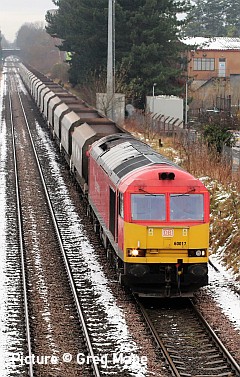
Forthcoming events
(see also our Calendar page for venues)
Note: we have removed all entries relating to meetings as the events are cancelled.
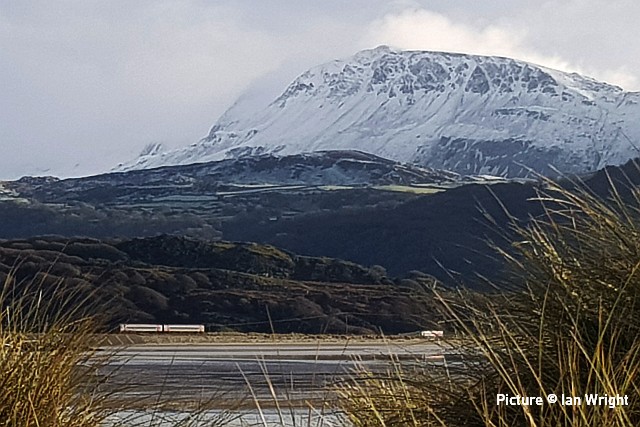
The view from the beach at Fairbourne on 31 January. Picture by Ian Wright.
News pictures
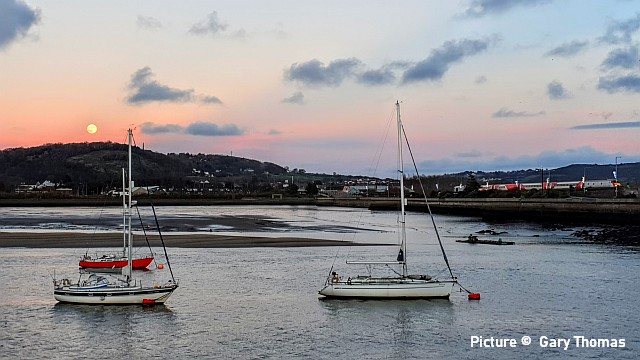
Test runs with the Class 67 and Mk4 Coaches have resumed. Gary Thomas writes: 'I was walking along the Quay in Conwy on 29 December and was taking a photo of the moon rising over Marl Mountain when I spotted a mark 4 set crossing Conwy Cob. 67 025 was pushing the set towards Holyhead.
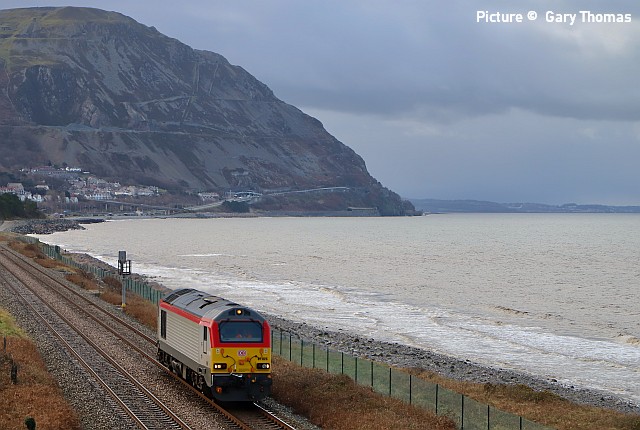
'Having checked Real Time Trains I noticed a light engine movement for Wednesday 30 December.

'The pictures show 67 025 heading towards Crewe on what I believe was a loco swap with 67 008 which returned from Crewe.'

Bob Greenhalgh writes: 'My walk round Chester Walls was timed just right to capture the TfW mk4 set on its return test run journey to Holyhead...
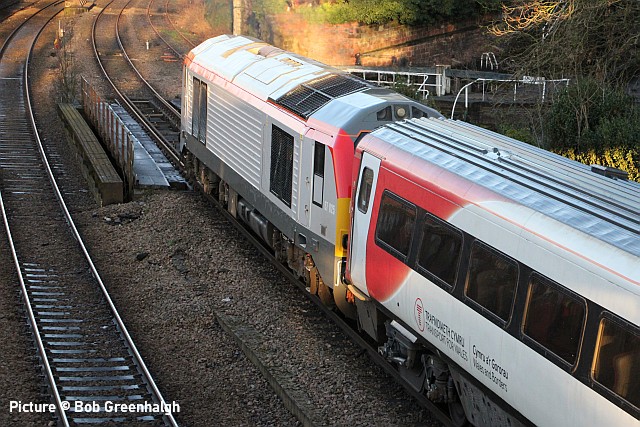
... traction was provided by 67 025.'
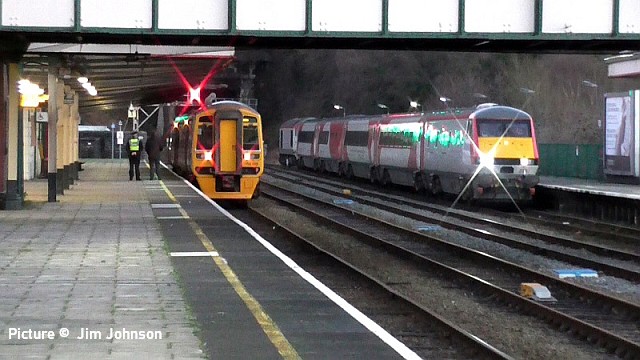
Jim Johnson's legal walk too him to Bangor station to see the train arriving at 16:17; 158 818 on the left is train 1L26 15:38 Holyhead - Birmingham International, waiting departure time in Platform 1.
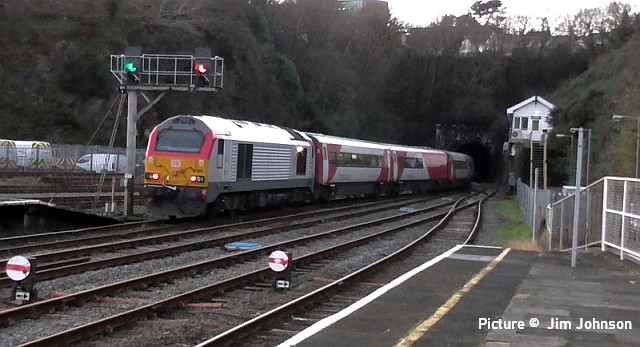
67 025 on the rear. We understand that Class 230 testing also resumes on 5 January. Look out for 3xxx entries on Real Time Trains.
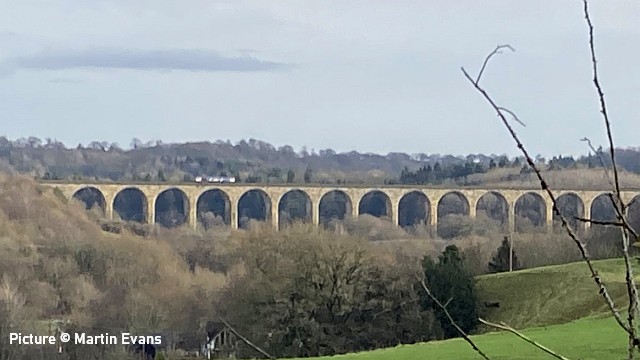
Also in progress is route learing by GBRf between Bescot and Bidston. Martin Evans writes: 'On 30 December I was walking near Froncysyllte along the Llangollen canal when I was in sight of Cefn viaduct and 66 747 was noted returning to Bescot from Bidston light engine on route learning duties at 13:16.'
It's useful that GBRf (and Northern) now provide data to Real Time Trains of the loco or unit numbers on each working. For at-home train watchers, Railcam now have a camera at the Crewe Heritage Centre looking towards the station, free to watch on YouTube.
Llangollen, 1999 - by Barrie Hughes
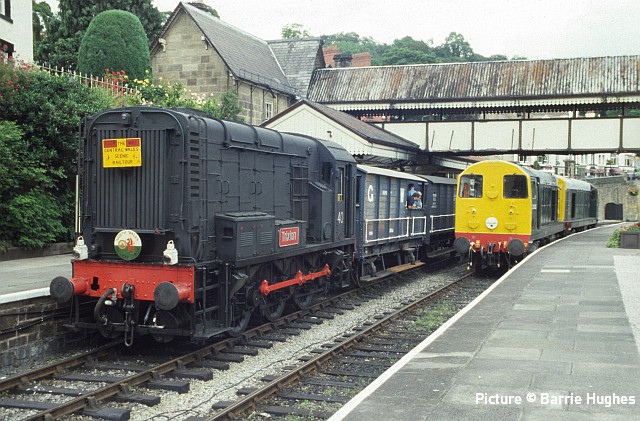
On 4 July 1999 I visited the Llangollen Diesel Gala. A shunter named Trixion was giving brake van rides in the platform with a headboard from a 1970s railtour I also happened to be on.
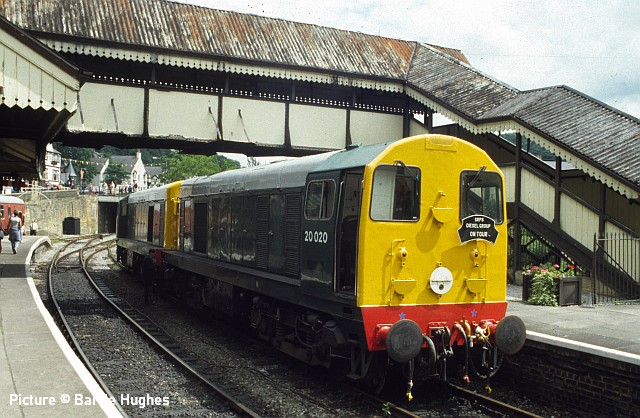
Two Class 20s were lining up for a haulage to Carrog. Class 20 No. 20020 carried the Scottish Railway Preservation Society’s headboard and ran with the Llangollen Railway’s own D8142 (20142). 20020 has since returned to Bo’Ness and now carries a pre-TOPS number, not to everybody’s liking. Class 20 No.20142 is now in a fictitious LT red livery but sees occasional main line use with a new owner. Its seems
that the line’s prototypical loco No.24081 had left for Toddington by this time.
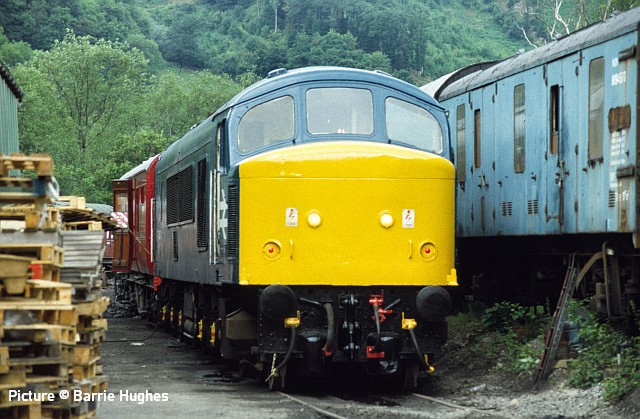
At this time the Llangollen Diesel Group took on 46 010 which had been sidelined at Doncaster Permanent Wayt Yard for some years.
A member of the Diesel Group told me the loco had stood idle for 13 years since withdrawal. It was started up effortlessly on 1/7/99 at 7:20 pm with a clean exhaust after just 10 seconds. The engine was shut down after 5 minutes after loading up unexpectedly. Insulation on the main generator had become loose and wrapped around the commutator brush assembly, which would necessitate the components being lifted out and overhauled.
The loco was repaired and released to traffic in 2000. At this time the Diesel Group was riding high with several main line locos in their fleet and they proposed to build a Diesel Maintenance shed at Corwen when the line extended to that point. The Llangollen Steam Railway seemed to react adversely to this, emphasising it was the Llangollen Steam Railway and the Diesel Group has since dwindled in numbers and has gradually reduced its fleet. D8142 left in December 2008. 25 313, a very likely loco to have worked to Llangollen in BR days, was started up for the last time in 2008 and sold to the Wensleydale Railway in 2009. The Class 46 left in December 2009 and the Group recently sold off two Class 37s to leave just a Class 26 and a Class 47 as the only main line locos. 46 010 is now back in action and based at Ruddington on the GCR (N). Were 26s ever seen at Llangollen in BR days?
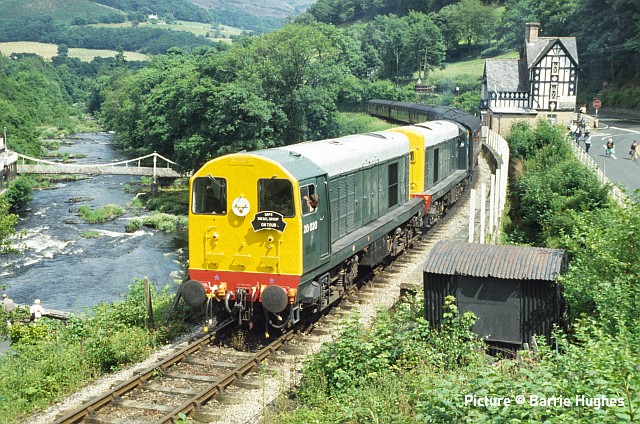
In the afternoon the 20s appeared on another Carrog working pictured at Berwyn ...
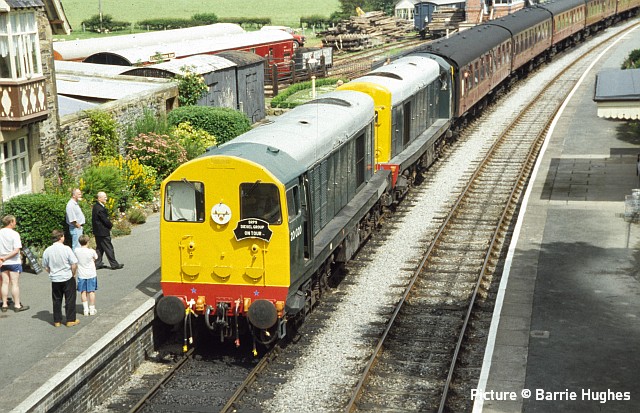
... and at Carrog.
Looking back: Welsh Highland in the 00s - with David Pool
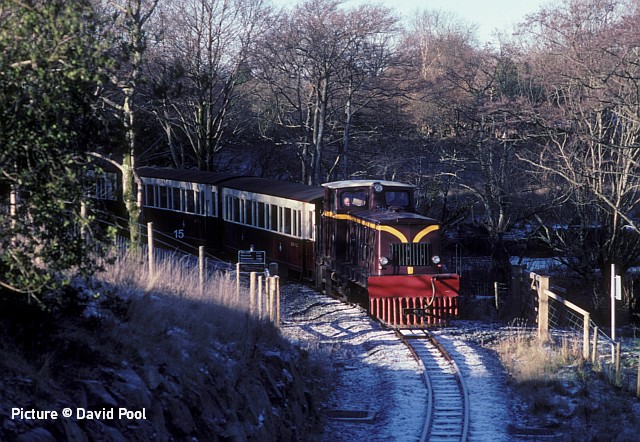
On New Year’s Day 2002 Castell Caernarfon was arriving at Waenfawr, in sunshine and at least some snow! It is always difficult to find a reasonable photographic location on the section between Tryfan Junction and Waenfawr, since there are few public footpaths and many trees obscuring the line.
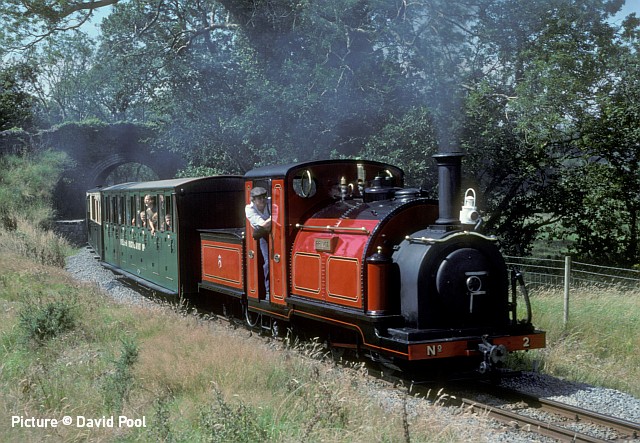
Later that year on 17 August, Prince was a visitor to the Welsh Highland, and is at the Cae Moel bridge under the road to Rhos Isaf. The first coach is typical of one from the original Welsh Highland Railway, built to the Ffestiniog loading gauge.
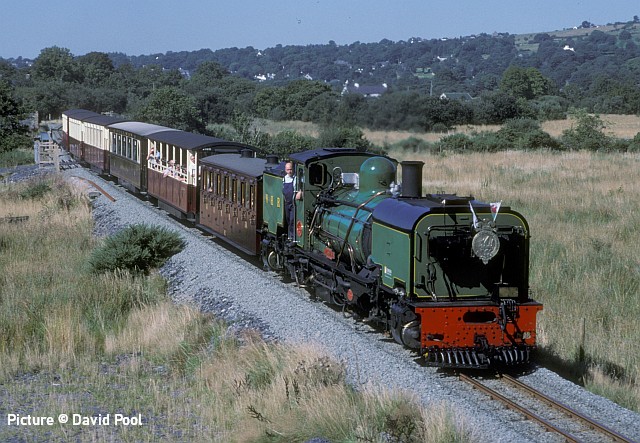
Garratt 138 had been given the name Millennium in 2002, when it was repainted in a lighter green livery. It is near the site of Betws Garmon station on 9 September 2004. Unlike the Ffestiniog Railway, the naming of steam locomotives on the WHR was a rare event. A later proposal to have nameplates on the Garratt K1 was rapidly quashed! The first coach illustrates the difference in loading gauge between the Ffestiniog Railway and the modern WHR.
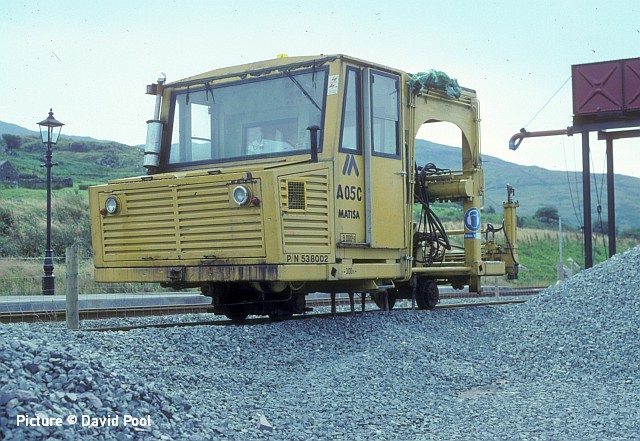
This Matisa Tamper photographed at Rhyd Ddu on 5 August 2007 has had an interesting history. It was basically a metre gauge design, but was modified to standard gauge and used on the construction of the Docklands Light Railway. It was then acquired by the WHR, and regauged yet again, being used as the WHR was progressing towards Porthmadog.
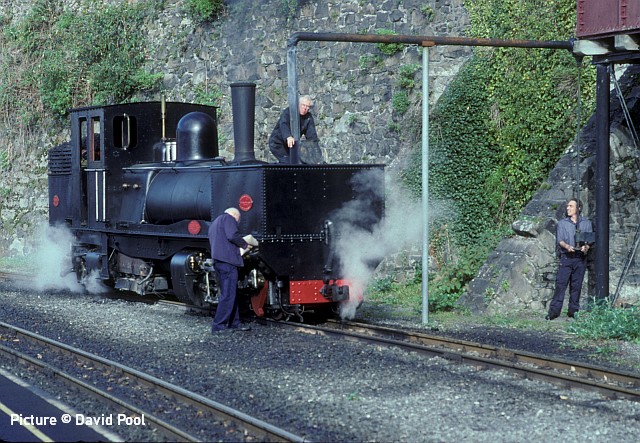
The first Garratt K1 (built in 1909 by Beyer Peacock for a tramway in Tasmania) entered service on the WHR in 2006, after a many years spent rebuilding it from a museum exhibit to steam as an oil fired locomotive. In 2007 it was converted back to coal firing, and is being prepared to work its train at Caernarfon on 29 October.
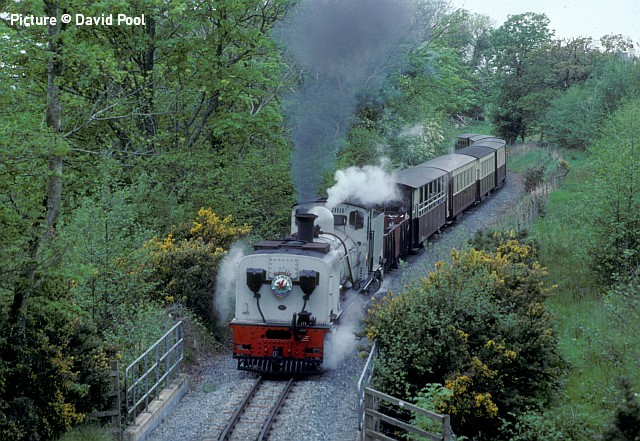
Garratt 87 is similar to the other South African NGG16 locomotives on the WHR, but was built in Belgium by Cockerill, and not by Beyer Peacock at Gorton. Returning to the UK, it had been intended to use it on railway projects which never materialised, and it was eventually moved to the Ffestiniog Railway and restored for the WHR at Boston Lodge, appearing in a “Photographic” light grey livery in January 2009. It was moved to Dinas in March, and on 14 May 2009 it was photographed at Cae Moel on its way to Beddgelert, the terminus at the time.
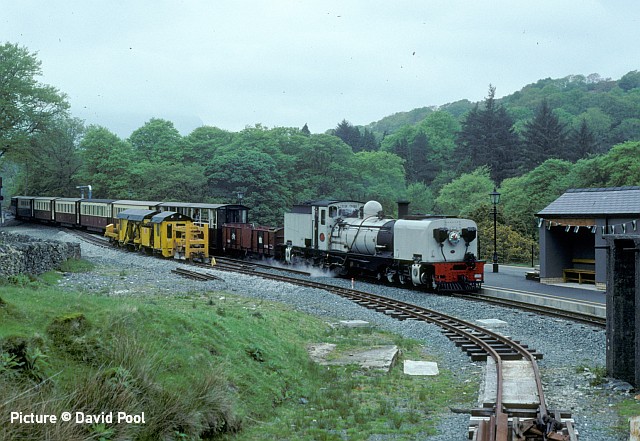
Arriving at Beddgelert, 138 is passing the Plasser KMX 95 CM Tamper, which had been working on the new line through the Aberglaslyn Pass. The Festipedia web page gives a very full description of how the Tamper was obtained through a French arm of the Plasser and Theurer organisation, and was rebuilt at the Ffestiniog railway for the WHR, the Tamper being originally metre gauge. Perhaps inevitably, the complexity of the design and the need for modifications led to some reliability issues, but eventually it was overhauled by Plasser and Theurer in 2011/12 and is now much improved.
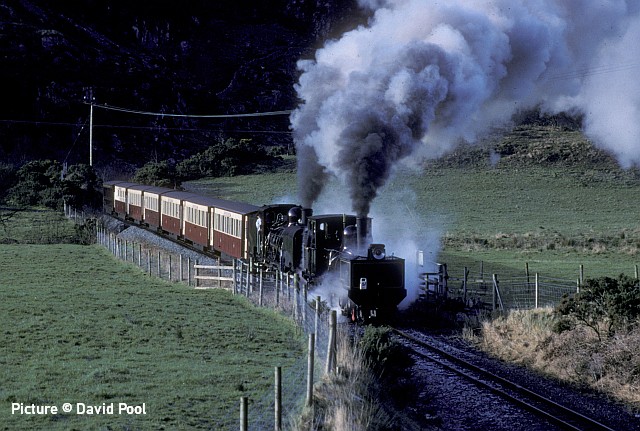
One of my favourite photographic locations on the WHR is Castell Cidwm, where the line passes under the road at the North end of Llyn Cwellyn, having come through the narrow valley of the Afon Gwyrfai. On 28 December 2009 the train from Caernarfon to Beddgelert (or possibly as far as Hafod y Llyn) was double headed, with K1 leading 138 – a remarkable combination of Garratts!
Last issue - feedback
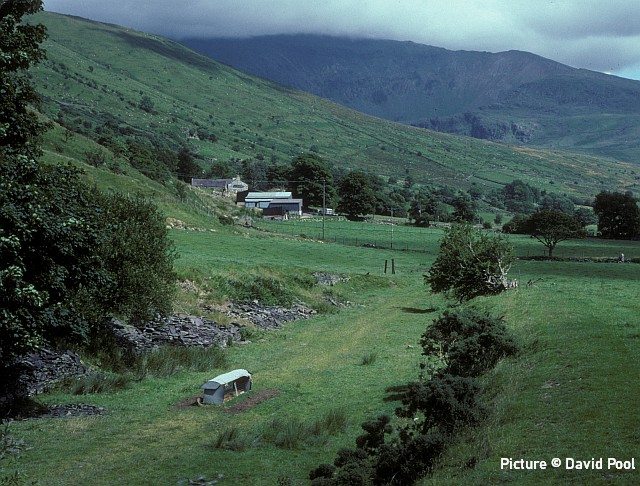
Several readers wrote to tell us that the picture above, from David Pool's WHR 90s contribution does not portray the site of Waenfawr station, as captioned, but a view of Castell Cidwm, taken from the A4085 road bridge over the Welsh Highland Railway trackbed. The view shows the trackbed looking south east towards Rhyd Ddu. The farm shown slightly left in the middle distance is Caeau Gwynion.
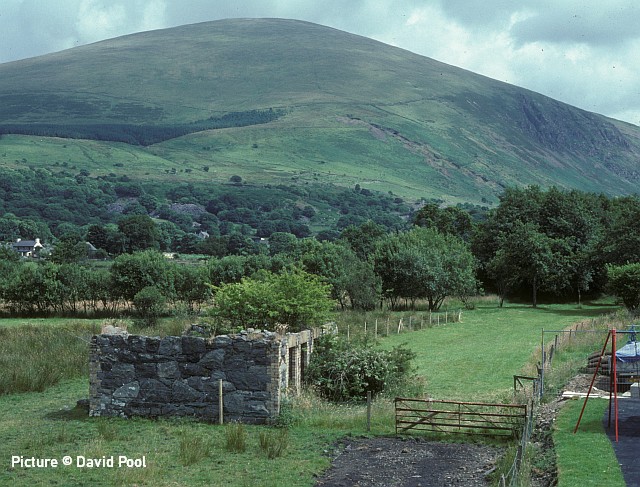
Here is the correct image, showing the remains of Waenfawr station little changed since closure in 1937.
Also, the series of images of the 'Yo-Ho-Ho' railtour were in the wrong order, with the train departing described as arriving ... we blame the fact that the headboard was still on the rear loco, perhaps combined with too much Christmas spirit consumed by the Editor.
Greg Mape's view
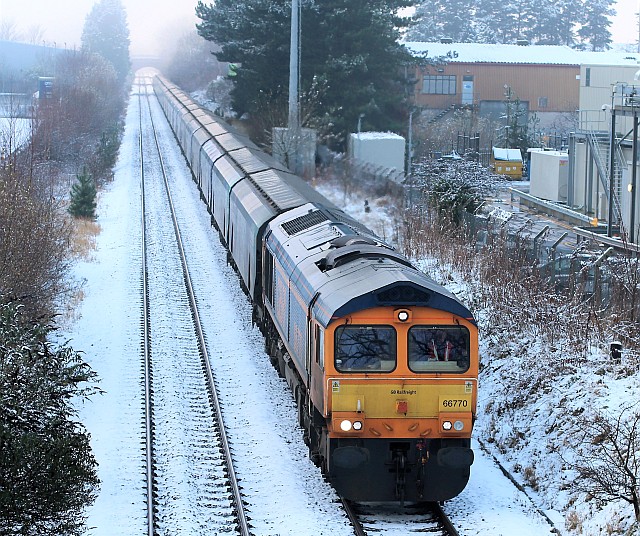
Snow on New-Year's eve in the Baguley area of the Mid-Cheshire line. 66 770 with another load of wood for Drax Power station.
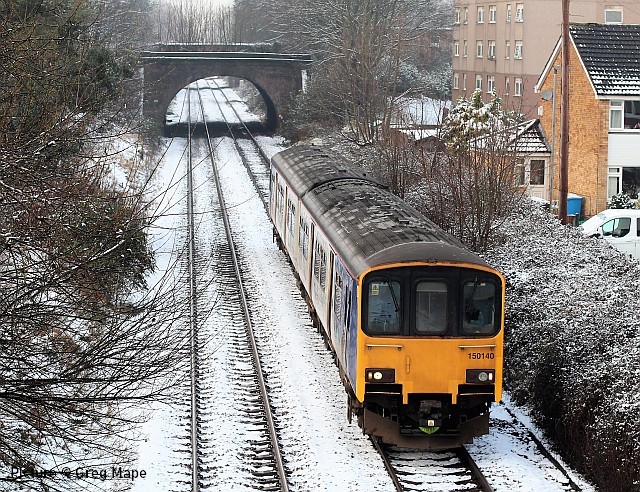
150 149 on a Chester - Manchester service. Surprisingly, in order to withdraw the 'Pacer' units from service, these trains have been reduced from socially distancing- friendly four cars to two; the Class 769 bi-modes have yet to see service, while Transport for Wales now have several of theirs in traffic.
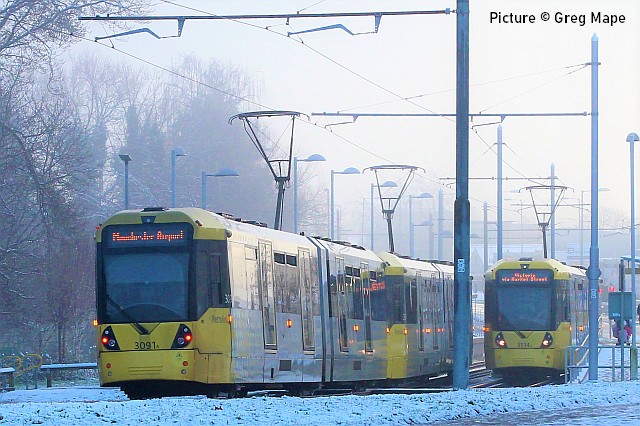
Baguley Metrolink station, with trams on the Manchester Airport line.
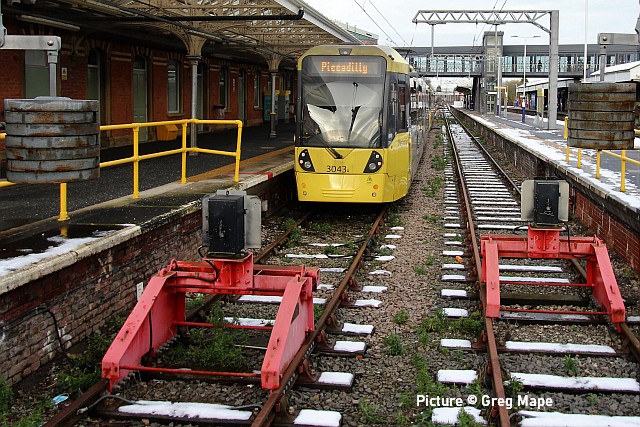
Altrincham station on New Year's Day, framed by the weights which keep the overhead wire in tension. On the buffer stops are colour light signals with only a red aspect. The Timperley to Altrincham section, with its two level crossings worked by Network Rail, is now the only part of the network controlled by traditional signals.
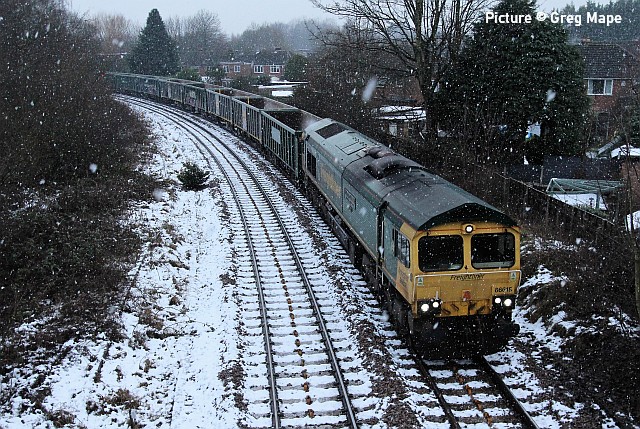
More snow flurries on 2 January, as Freightliner 66 616 negotiates the Deansgate Junction - Skelton Junction curve with empty stone wagons from Northampton to Freightliner's base at Guide Bridge. The devices between the rails are anchors to prevent sideways movement of the track.
North Wales Coast home page | Archive | Previous Notice Board